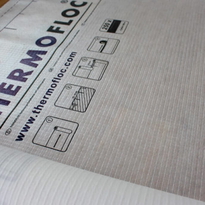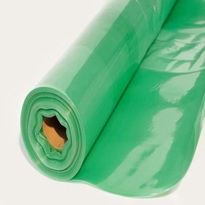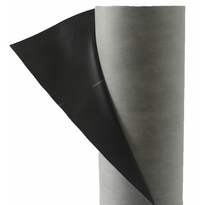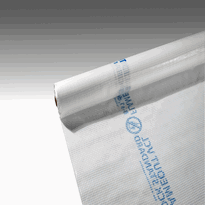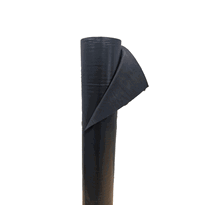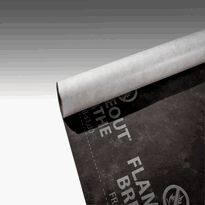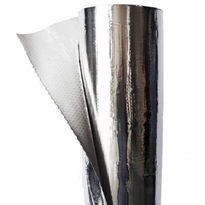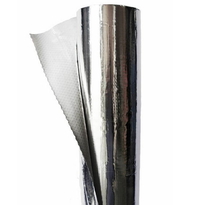Fire Rated Breathable Membrane
Fire-rated breathable membranes are specially designed to provide effective moisture management whilst ensuring compliance with stringent fire safety standards. These membranes are classified from A1 to B, with classifications such as A2-s1, d0 indicating very low flammability and limited smoke production. They undergo rigorous testing according to standards like ISO 1716 and BS EN 13823, which assess heat release, flame spread, and smoke emissions to guarantee their safety and performance.
Proper installation is crucial to maintaining their fire-resistance properties. This includes sealing all joints thoroughly and using fixings made from corrosion-resistant materials to prevent any compromise of the membrane’s integrity over time. When installed correctly, fire-rated breathable membranes significantly contribute to the overall safety of buildings by acting as a vital barrier against the spread of fire and smoke while still allowing moisture vapour to escape.
Continuing further, it is important to understand how these membranes bolster building safety and help meet regulatory requirements. Their ability to perform under fire conditions, combined with effective moisture control, makes them an essential component in modern UK construction, supporting the integrity of the building envelope and safeguarding occupants.
Fire Classifications and Standards for Breathable Membranes
Fire classifications and standards for breathable membranes are essential benchmarks to ensure safety and compliance within the construction industry, especially in high-rise or high-risk buildings. These classifications evaluate how materials respond to fire, focusing on ignitability, flame spread, heat release, and smoke production. The European classification system, known as Euroclass, ranges from A1 to F. Class A1 indicates materials that are non-combustible, while class A2 represents very limited combustibility, making it appropriate for use in high-rise and sensitive structures. Membranes aiming for higher safety standards typically meet classifications such as A2-s1, d0 or B, which denote low flammability and limited smoke production.
Standards such as ISO 1716 and BS EN 13823 establish rigorous testing methods to assess the energy release, flame spread, and smoke emissions of materials under fire conditions. These tests enable manufacturers and designers to determine the fire performance of breathable membranes reliably. Achieving a high fire safety classification can also influence insurance premiums and building certifications. Additionally, fire safety classifications often incorporate considerations of the membrane’s smoke toxicity and the rate at which it releases heat, which are critical factors during fire emergencies.
Ensuring that breathable membranes meet these classifications not only ensures compliance with UK regulations but also provides reassurance of the membrane’s safety performance in the event of a fire. By integrating membranes that meet stringent fire safety standards, construction professionals can develop safer, more resilient buildings that protect occupants and property.
Notably, these classifications form part of the broader framework of fire safety in construction, guiding the selection of materials that contribute to a building’s overall fire resistance and safety profile.
Applications and Benefits in Building Safety
Enhanced fire protection in building facades is achieved through the application of fire-rated breathable membranes, which serve to preserve the structural integrity of external walls by providing a fire-resistant barrier. These membranes are especially advantageous for high-risk structures such as high-rise residential buildings, hospitals, or social housing, where fire safety is paramount. They support compliance with evolving fire safety regulations, enabling buildings to meet strict standards. Additionally, they're practical in contexts where combustible materials are prohibited in external wall assemblies, such as many developments across London. The membranes also facilitate the retrofitting of older buildings, reducing the risk of fire spread while addressing moisture-related issues like damp and condensation. Including fire performance disclosures with independent testing results ensures transparency and reliability of the fire-resistant properties. Their versatility ensures enhanced safety across various building types and applications, fostering safer, more resilient urban environments.
Installation, Maintenance, and Durability Considerations
Proper installation of fire-rated breathable membranes is crucial to ensure their performance in protecting building structures. Selecting the appropriate membrane involves assessing safety standards and recognizing potential high-risk zones, often favoring multi-layered solutions for enhanced security. All seams and joints must be thoroughly sealed to prevent the spread of fire and to extend the membrane’s durability.
Fixing methods should utilize stainless steel staples or corrosion-resistant nails to secure the membrane effectively. Before installation, the surface must be cleaned and dried to optimize adhesion and prevent future issues. Engaging two workers in the installation process typically improves accuracy and efficiency, particularly over larger areas.
Consideration |
Key Action |
| Choosing the Right Membrane | Match safety requirements; opt for multi-layer options |
| Seam and Joint Preparation | Ensure proper sealing to inhibit fire spread |
| Fixing Methods | Employ stainless steel or corrosion-resistant fixings |
| Surface Preparation | Clean and dry surfaces prior to installation |
| Collaborative Installation | Involve two operatives to enhance precision and speed |
Conclusion
Selecting a fire-rated breathable membrane necessitates a comprehensive understanding of relevant safety classifications, suitable application environments, and proper installation techniques. Such membranes enhance building safety by offering fire resistance whilst maintaining effective breathability, which is vital for the structural integrity and longevity of buildings. Regular maintenance and careful monitoring of durability are essential to sustain performance standards over time. By adhering to established UK standards and best practice guidelines, builders and installers can ensure the long-term safety, functionality, and resilience of these membranes, ultimately contributing to safer, more durable buildings across the UK.
